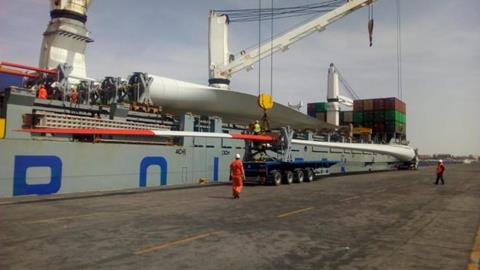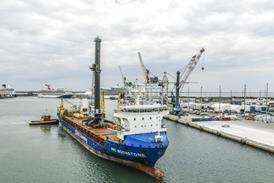Data from Esgian’s multipurpose market insight reports shows shifting activity levels at ports in the Far East, USA and Europe from 2022 to Q1 2025, with further surges and slowdowns anticipated as a result of new tariffs and trade policies introduced this year.

Analysis on Far East ports from 2022 to Q1 2025 broadly showed increased port calls from the multipurpose sector. However, a year-on-year comparison of multipurpose port calls from 2023 to 2024 indicates a drop in port call frequency at Tianjin Xingang (down 11 percent), Shanghai (down 26 percent), Busan (down 30 percent), and Ulsan (down 16 percent).
Meanwhile, Japan’s Kobe, Yokohama and Nagoya saw modest gains, up 6 percent, 2 percent and 13 percent respectively.
In terms of carrier activity, Esgian said that while some operators continued to expand, several major players experienced reduced activity in 2024, “signalling a shift in operational patterns or market conditions”.
European port activity saw a modest decline at the continent’s busiest gateway, Rotterdam, with a 6 percent drop in multipurpose port calls from 2023 to 2024. Nevertheless, the port maintained its leading position in the region with its counterparts Antwerp and Hamburg also registering a slight decline in port call frequency.
Smaller European ports, such as Cuxhaven, Vlissingen, and Avilés experienced overall growth, said Esgian, with a notable rebound between 2023 and 2024.
From 2022 to 2024, the top three ports in the USA – Houston, New Orleans and Baltimore – experienced a continuous decline in port calls. Houston and New Orleans experienced modest but gradual declines of 2 percent and 3 percent respectively from 2023-2024, with Houston maintaining its hefty lead in multipurpose port call frequency, while Baltimore registered a clearer 12 percent downward trend.
Overall, data from Esgian showed general growth of smaller US ports from 2022 to Q1 2025. For the year-on-year 2023 to 2024 comparison, Mobile (up 64 percent), Port Everglades (up 42 percent), Port Arthur (up 27 percent), and Palm Beach (up 11 percent) demonstrated the strongest growth in activity.
These trends, however, are subject to change this year as the ramifications of new tariffs and trade policies come into effect. Some operators may adjust their strategies in response to changing supply chain dynamics later in the year.
In the Far East, which is home to some of the hardest hit countries in terms of the recent tariff hikes, Esgian said this could “lead to both surges and slowdowns in shipments to the US, driven by uncertainty and supply chain disruptions”. For Europe, these changes will also shape future shipment patterns and transatlantic trade at major ports.
















